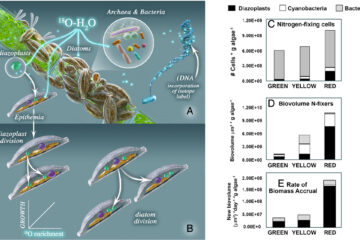Relationships between C and N availability, substrate age, and natural abundance 13 C and 15 N signatures of soil microbial biomass in a semiarid climate
Soil microbial organisms are central to carbon (C) and nitrogen (N) transformations in soils, yet not much is known about the stable isotope composition of these essential regulators of element cycles. We investigated the relationship between C and N availability and stable C and N isotope composition of soil microbial biomass across a three million year old semiarid substrate age gradient in northern Arizona. The δ15N of soil microbial biomass was on average 7.2‰ higher than that of soil total N for all substrate ages and 1.6‰ higher than that of extractable N, but not significantly different for the youngest and oldest sites. Microbial 15N enrichment relative to soil extractable and total N was low at the youngest site, increased to a maximum after 55,000 years, and then decreased slightly with age. The degree of 15N enrichment of microbial biomass correlated negatively with the C:N mass ratio of the soil extractable pool. The δ13C signature of soil microbial biomass was 1.4‰ and 4.6‰ enriched relative to that of soil total and extractable pools respectively and showed significant differences between sites. However, microbial 13C enrichment was unrelated to measures of C and N availability. Our results confirm that 15N, but not 13C enrichment of soil microbial biomass reflects changes in C and N availability and N processing during long-term ecosystem development.


